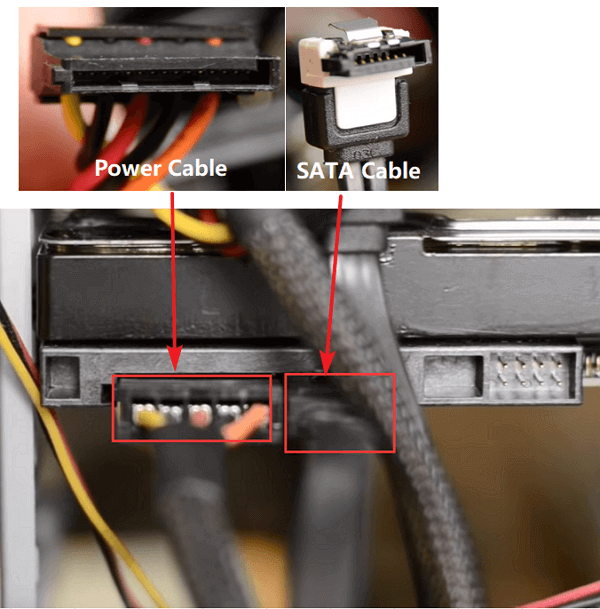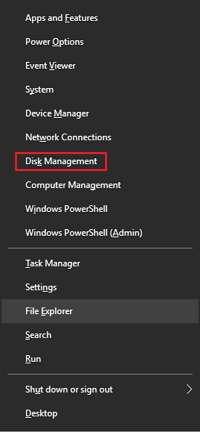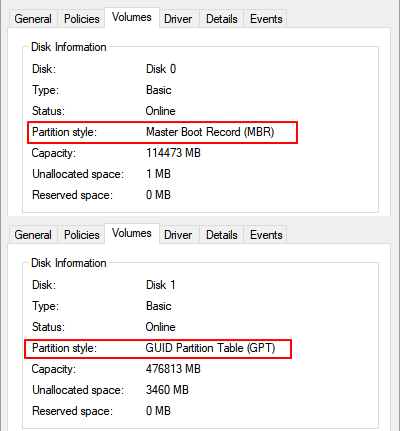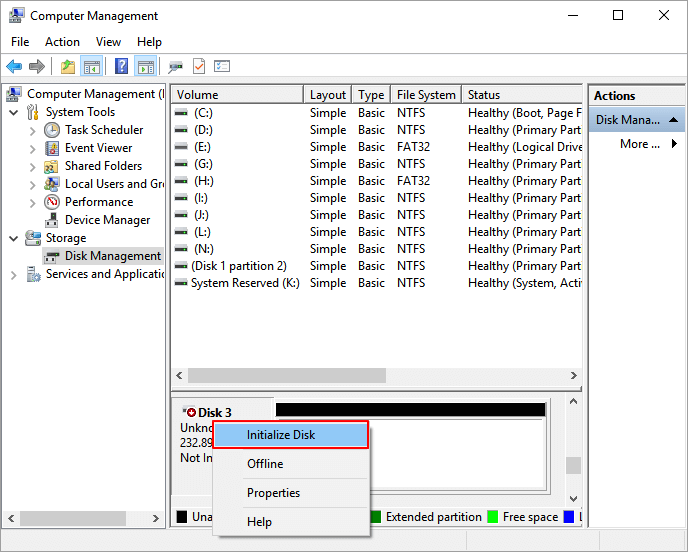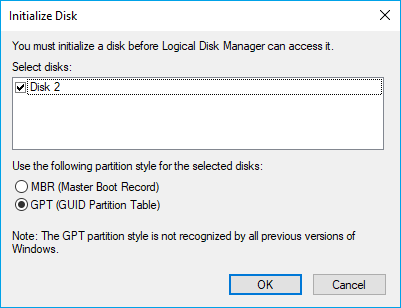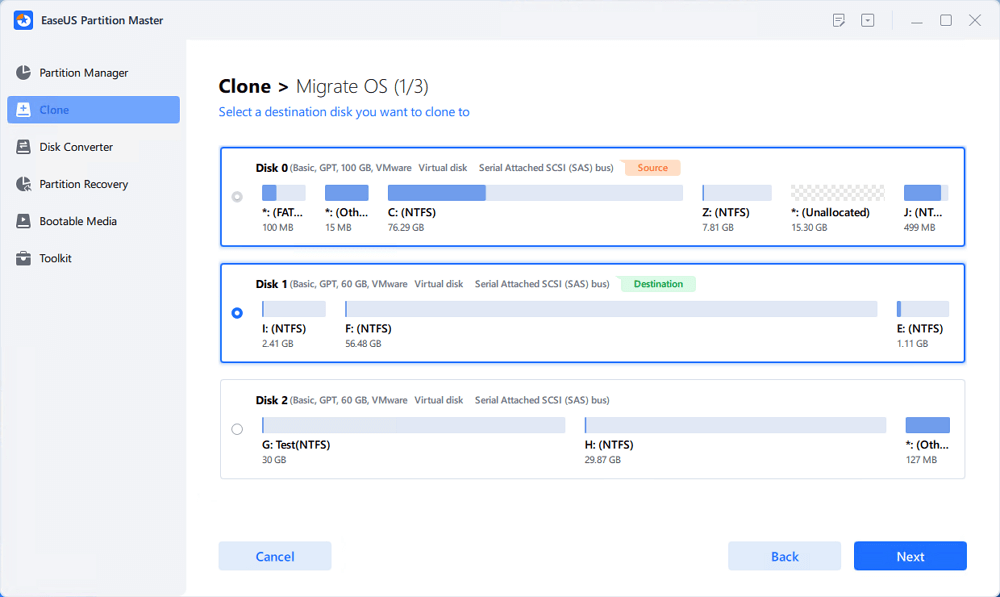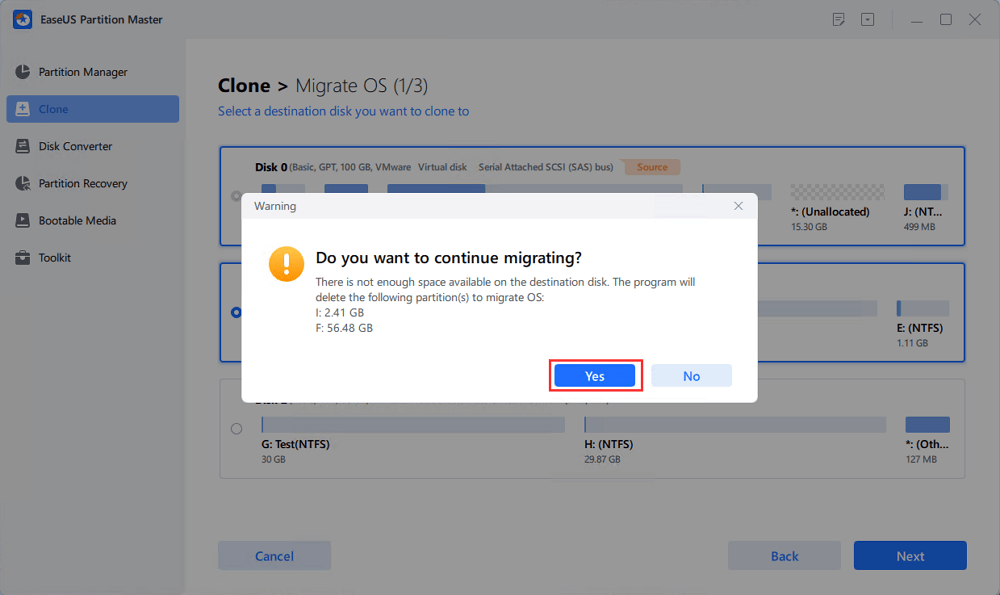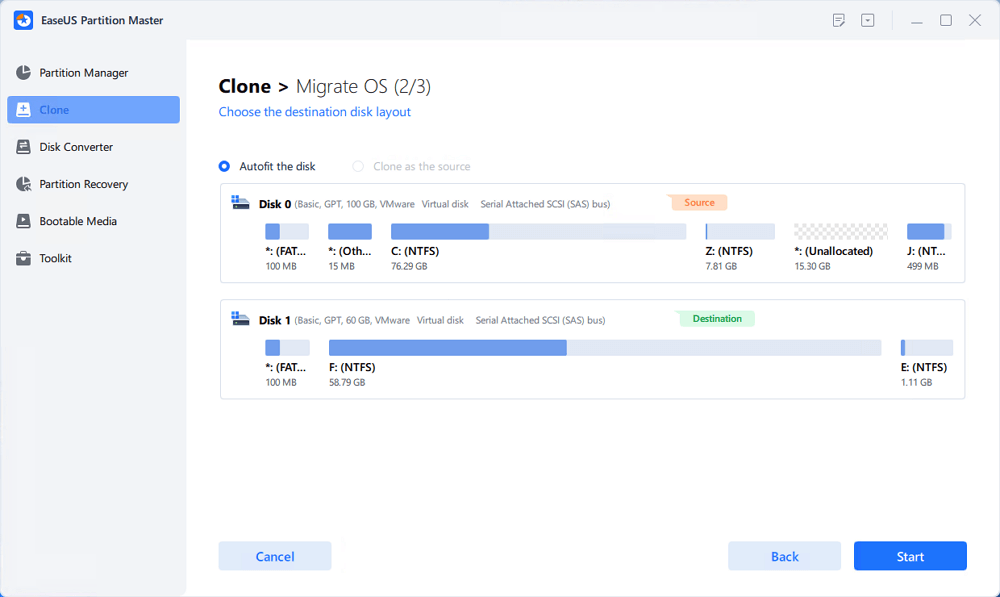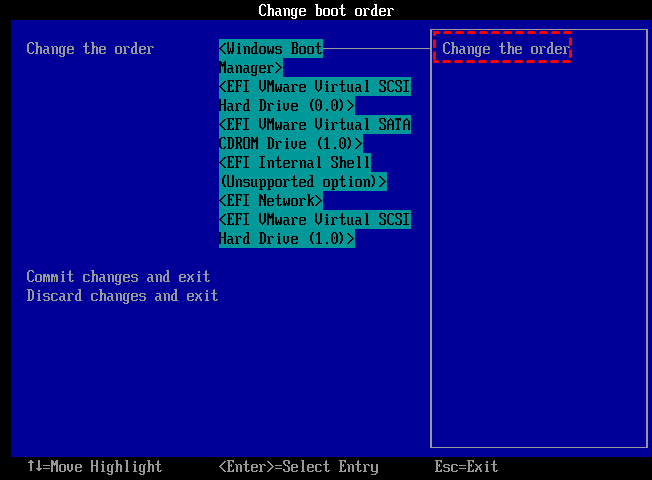- Remove From My Forums
-
Общие обсуждения
-
Нужно перенести windows server 2008 r2 на другой компьютер. На windows server 2008r2 стоит MS SQL server, AD, разные программы специфичные и он является еще терминальным сервером. Подскажите пожалуйста как это лучше всего сделать правильно?
-
Изменен тип
Vinokurov Yuriy
20 февраля 2012 г. 13:50
-
Изменен тип
Все ответы
-
На новом железе разворачиваем Hyper-V и
мигрируем русерсы на виртуальные машины. Виртуальные машины создаем на основании Best Practice Hyper-V и рекомендаций для разварачиваемых ролей.
MCITP. Знание — не уменьшает нашей глупости.
-
А возможен ли такой вариант снимаю жесткий диск со старого компьютера и ставлю его на новый. При загрузке запускаю восстановление системы. Такой вариант прокатит? =)
-
А возможен ли такой вариант снимаю жесткий диск со старого компьютера и ставлю его на новый. При загрузке запускаю восстановление системы. Такой вариант прокатит? =)
Нет не прокатит.
Возможен варинат через Full Backup, Full Restor, но учитывая что вы незнаете настроек которые у вас существуют, то только через миграцию.
MCITP. Знание — не уменьшает нашей глупости.
-
Изменено
Oleg.Kovalenko
7 февраля 2012 г. 13:00
-
Изменено
-
hyper-v далеко не всегда прокатит, например если там специализированное железо (usb устройства, ленточные библиотеки через sas/scsi/fc и т.д.)
есть решения по клонирвоанию систем в том числе на абсолютно другое железо.
-
hyper-v далеко не всегда прокатит, например если там специализированное железо (usb устройства, ленточные библиотеки через sas/scsi/fc и т.д.)
есть решения по клонирвоанию систем в том числе на абсолютно другое железо.
Что за решение не подскажите?
-
Старый сервер остаеться поэтому ленточные библиотеки и usb устройства можно оставить на старом, остальное можно разнести по витуальным системам.
MCITP. Знание — не уменьшает нашей глупости.
-
hyper-v далеко не всегда прокатит, например если там специализированное железо (usb устройства, ленточные библиотеки через sas/scsi/fc и т.д.)
есть решения по клонирвоанию систем в том числе на абсолютно другое железо.
Что за решение не подскажите?
DPM BareMetal Restore, например
-
Чем новое железо отличается от старого?
-
Уважаемый пользователь,
В вашей теме отсутствует активность в течение последних 5 дней. При отсутствии каких-либо действий в течение 2 последующих дней, тема будет переведена в разряд обсуждений. Вы можете возобновить дискуссию, просто оставив сообщение в данной теме
-
Тема переведена в разряд обсуждений по причине отсутствия активности
-
Реанимирую тему.
Похожая ситуация. Старый сервачок — SCSI диски, система на программном RAID-1 средствами самой ОС. Впоследствии был добавлен контроллер и на него зацеплены два САТА диска — собраны в железный RAID-1.
Сегодня один SCSI диск умер, сдается мне что второй тоже готов к выносу вперед ногами.
Думаю перенести систему на САТА RAID. В системе установлены: Symantec Endpoint Protectiion Manager, DFS (не критичный и есть реплика), Принт-сервер.
Есть DPM. Подумал полностью забакапить с бареметал и восстановить на САТА Раид. Т.к. есть диски С и D, то думаю на САТА Раиде откусить партицию и на нее восстановить Систему. Чтобы DFS и прочие фенички не перецеплять. Пройдет такая
операция?В принципе, после бакапа, можно просто отсоединить диски SCSI и проверить как пройдет восстановление и работа системы. Если что криво пойдет просто подцепить обратно SCSI диски. По идее должно все сработать?
ИЛИ:
взять какую-либо сторонюю утилиту, загрузиться скажем с Hiren и тупо копирнуть партицию, а потом исправить в bcdedit загрузку?
-
Изменено
ibGrass
7 февраля 2013 г. 6:47
-
Изменено
-
-
Изменено
Oleg.Kovalenko
7 февраля 2013 г. 9:02
-
Изменено
-
Олег, да это второе , после бакапа, что я сделал. сижу жду когда зальется на сервер с гипером. Чтобы на время «разборок» люди могли печатать на принтера.
Зесь именно вопрос в том чтобы оставить эту систему на этом же железе, т.к. переносить шары и WDS на гипер не охота.
-
кстати, пошукав по инету, появились сомнения на счет гибели скази диска. До сей ночи диски работали и намека на битый диск не было. А вчера сделал кое какие настройки в Симантеке и он сожрал диск до 90% его емкости. Осталось 11%.
И после этого в диск манаджере появилось сообщение о битом РАИД массиве.Сейчас после Reactivate Volume оба диска в составе РАИД-1 показывает онлайн. Но сам ТОМ все равно показывает в Fialed Redudancy. Так вот у людей такая же проблема — после занятия определенного кол-ва места на томе, получают сбой массива, и
в РАИД-1 и в РАИД-5.зы: есть мысль разобрать массив и занова собрать. НО! какой же из дисков содержит конечные данные, если том в фаулте?
зыы: верно ли мое предположение, что реальные данные на том диске который в diskpart показывает как бутовый? и на него система пишет данные в состояние Fialed Redudancy Тома.
-
Изменено
ibGrass
7 февраля 2013 г. 9:26
-
Изменено
-
Винт реально сдох. А вот софтовый раид-1 вел себя странно. Если винда не смогла зареактивейтить мертвый винт, зачем она стала писать что живой винт тоже Error?
Перенос такого софт.раида-1 через disk2vhd ни чего не дал, система просто валится в синий экран, даже в safe mode.
Сделал подругому. Разобрал раид-1 до динамик диск, заранее определил какой именно диск живой, чтобы исправить загрузку в bcdedit и в diskpart.
Проверил загрузку системы с него. Взял Hiren’s с него запустил бесплатную утилиту Parted magic, ей перенес системные партиции — 100Мб и основную с виндой, на САТА диск. При переносе есть нюансы, т.к. тулза используют линух софт для работы с нтфс. Проверил
загрузку системы с САТА диска.Потом в биосе РАИДа САТА создал РАИД-1 и при построение массива указал родительский винт с которого копировалась партиция.
И вуаля, все живое и шуршит.
-
Делал перенос из железа в виртуальную среду:
cmd> c:WindowsSystem32sysprepsysprep.exe
Параметры: Переход в окно приветствия системы (OOBE), Подготовка к использованию,Завершение работы.
Ок, выполняется, выключается. После этого можно жесткий диск ставить надругое железо.
Updated by
Sherly on Dec 06, 2022
- Duration: 30 minutes — 1 hour.
- Applies to: Migrate Windows Server 2022/2019/2016/2013/2008/2002 to a new HDD/SSD.
Can You Perform a Server OS Migration on the Same Server? Are you looking for a reliable Windows Server migration tool to transfer and upgrade Windows Server to a new disk? Do you want to upgrade the Windows Server OS disk?
You’ll get a complete guide to migrate Windows Server OS to a new disk with success on this page.
# 1. Prepare New Disk for Windows Server OS Migration
In the process of preparing a new disk for Windows Server migration, you may encounter two issues:
- 1. Which type of disk to select?
- 2. How to make the new disk ready?
Let’s first figure out what your goal for Windows Server OS migration is:
- Upgrade Windows Server to a bigger disk, hard disk drives with big storage capacity is what you need.
- To optimize Windows Server running speed, SSDs with sufficient storage capacity should work.
A hard drive with 32GB — 4 TB or SSD with 2-4TB or even bigger storage size is recommended for Windows Server installation.
When you get the disk back, you’ve now come to the next step: getting the new disk ready for Windows Server migration. Here are the steps:
Step 1. Add new disk to Windows Server computer via a SATA cable and a power cable.
Step 2. Once connected the new disk to your computer, open Disk Management in Windows Server.
Step 3. Right-click the old system drive and select «Properties», confirm its disk partition style is MBR or GPT.
Step 4. Locate and right-click the new disk, which will display as «Unknown or Not Initialized», and select «Initialize Disk».
Step 5. Select the disk style for the new disk, make sure it’s the same as the old system disk — MBR or GPT, and click «OK» to confirm.
Once done, your new disk is ready for Windows Server migration, and you can move to the next guide for further operation.
#2. Pick and Download Windows Server Migration Tool for Help
Windows Server Manager has Windows Server Migration Tools that you can turn to for help. But this tool only works efficiently in transferring Windows Server system to another computer with a complex operation procedure. And it doesn’t work quite well in updating Windows Server OS within one computer.
To do an in-place upgrade of the Windows Server system disk, you’ll need to turn to a professional system migration tool or software for help.
EaseUS Partition Master Enterprise, with its reliable Migrate OS feature, allows any Windows Server and Windows users to efficiently migrate the operating system to a new hard drive or SSD with success. It requires no technical background to migrate Windows Server to a new HDD/SSD successfully.
EaseUS Partition Master Enterprise
Your trustworthy Windows Server disk manager.
- Extend System drive, combine/split partitions.
- Clone disk, migrate OS to HDD/SSD.
- Convert MBR to GPT, GPT to MBR, no data loss.
- 1-click adjust disk layout, create volumes at one time.
24/7 Tech Chat
Free Inquiry
After installing the Windows Server migration tool on your computer, you can refer to the next guide for system migration between old and new disks.
#3. Migrate Windows Server OS to a New Hard Drive or SSD
Here are the steps that you can follow to migrate your Windows Server system to the newly added hard drive or SSD:
Note: The operation of migrating OS to SSD or HDD will delete and remove existing partitions and data on your target disk when there is not enough unallocated space on the target disk. If you saved important data there, back up them to an external hard drive in advance.
Step 1. Select «Clone» from the left menu. Select the «Migrate OS» and click «Next» to continue..
Step 2. Select the target disk you want to clone. Click «Next».
Step 3. Click «Yes» after checking the warning message. The data and partitions on the target disk will be deleted. Make sure that you’ve backed up important data in advance. If not, do it now.
Step 4. Preview the layout of your target disk. You can also click the disk layout options to customize the layout of your target disk as you want. Then click «Start» to start migrating your OS to a new disk
Aside from OS migration, this tool also helps you to:
- Manage hard drive space in Windows Server
- Extend System C drive or fix low disk space error in C drive
- Merge or split hard drive partitions
- Create, format, convert, delete, and even wipe disk partitions
- Recover partitions, 4K align SSD, check and repair disk error, etc.
24/7 Tech Chat
Free Inquiry
When the system migration procedure completes, it’s essential that you enter the Windows Server BIOS settings to configure the system drive boot order. The steps are contained in the next guide.
#4. Set The New Disk as System Boot Drive
Step 1. Reboot Windows Server computer and press the F2/F8 or Del key to enter the BIOS settings.
Step 2. Go to the Boot Menu, find the Boot Order settings section, and click it.
Step 3. Select the priority boot drive as the newly added drive and save the changes.
Step 4. Exit BIOS and restart the computer.
Wait for the computer to boot up and enter your Windows Server systems. When you see the login image, enter your account and password, you can then start using your Server computer on the new disk.
You Can Migrate Windows Server Computer to A New Hard Drive or SSD Now
We simplify the Windows Server OS migration procedure into 4 separate guides on this page.
Always remember, to migrate and configure Windows OS migration to a new disk, you should first prepare the disk, get a reliable OS migration tool like EaseUS Partition Master for help.
24/7 Tech Chat
Free Inquiry
Next, apply EaseUS Partition Master to migrate OS and configure the new disk as the boot drive.
As long as you follow the full guide one by one, you can successfully migrate the Windows Server systems to a new disk and enjoy optimized Server computer performance immediately.
FAQs About Migrate Windows Server to a New HDD/SSD
If you have further questions about migrating the Windows Server system to a new hard drive or SSD, follow and find answers to the listed questions below:
1. Can I move my Windows OS to another hard drive?
Yes, you can move Windows operating system to another hard drive successfully without reinstallation. All you need is to turn to a system migration tool like EaseUS Partition Master with its Migrate OS to SSD or HDD feature for help.
2. How do I move my Server OS?
- First, connect a new disk with equal or larger storage space than the used data size of the Server OS drive.
- Second, initialize the new disk to the same partition style as the Server OS disk — MBR or GPT.
- Third, run a reliable OS migration tool like EaseUS Partition Master to migrate the Server OS.
- Once done, reboot Windows Server and set the computer to boot from the new disk.
3. Can I migrate just my OS to an SSD?
Yes, you can only transfer OS to a new SSD without reinstalling the system on Windows computers. To do so, you’ll just need a new SSD with the same disk type as the OS drive and then migrate the OS to SSD with a reliable OS migration tool like Windows 11 System Migration Software for help. EaseUS Partition Master can fulfill your remands for OS migration between HDDs and SSDs.
Updated by
Sherly on Dec 06, 2022
- Duration: 30 minutes — 1 hour.
- Applies to: Migrate Windows Server 2022/2019/2016/2013/2008/2002 to a new HDD/SSD.
Can You Perform a Server OS Migration on the Same Server? Are you looking for a reliable Windows Server migration tool to transfer and upgrade Windows Server to a new disk? Do you want to upgrade the Windows Server OS disk?
You’ll get a complete guide to migrate Windows Server OS to a new disk with success on this page.
# 1. Prepare New Disk for Windows Server OS Migration
In the process of preparing a new disk for Windows Server migration, you may encounter two issues:
- 1. Which type of disk to select?
- 2. How to make the new disk ready?
Let’s first figure out what your goal for Windows Server OS migration is:
- Upgrade Windows Server to a bigger disk, hard disk drives with big storage capacity is what you need.
- To optimize Windows Server running speed, SSDs with sufficient storage capacity should work.
A hard drive with 32GB — 4 TB or SSD with 2-4TB or even bigger storage size is recommended for Windows Server installation.
When you get the disk back, you’ve now come to the next step: getting the new disk ready for Windows Server migration. Here are the steps:
Step 1. Add new disk to Windows Server computer via a SATA cable and a power cable.
Step 2. Once connected the new disk to your computer, open Disk Management in Windows Server.
Step 3. Right-click the old system drive and select «Properties», confirm its disk partition style is MBR or GPT.
Step 4. Locate and right-click the new disk, which will display as «Unknown or Not Initialized», and select «Initialize Disk».
Step 5. Select the disk style for the new disk, make sure it’s the same as the old system disk — MBR or GPT, and click «OK» to confirm.
Once done, your new disk is ready for Windows Server migration, and you can move to the next guide for further operation.
#2. Pick and Download Windows Server Migration Tool for Help
Windows Server Manager has Windows Server Migration Tools that you can turn to for help. But this tool only works efficiently in transferring Windows Server system to another computer with a complex operation procedure. And it doesn’t work quite well in updating Windows Server OS within one computer.
To do an in-place upgrade of the Windows Server system disk, you’ll need to turn to a professional system migration tool or software for help.
EaseUS Partition Master Enterprise, with its reliable Migrate OS feature, allows any Windows Server and Windows users to efficiently migrate the operating system to a new hard drive or SSD with success. It requires no technical background to migrate Windows Server to a new HDD/SSD successfully.
EaseUS Partition Master Enterprise
Your trustworthy Windows Server disk manager.
- Extend System drive, combine/split partitions.
- Clone disk, migrate OS to HDD/SSD.
- Convert MBR to GPT, GPT to MBR, no data loss.
- 1-click adjust disk layout, create volumes at one time.
24/7 Tech Chat
Free Inquiry
After installing the Windows Server migration tool on your computer, you can refer to the next guide for system migration between old and new disks.
#3. Migrate Windows Server OS to a New Hard Drive or SSD
Here are the steps that you can follow to migrate your Windows Server system to the newly added hard drive or SSD:
Note: The operation of migrating OS to SSD or HDD will delete and remove existing partitions and data on your target disk when there is not enough unallocated space on the target disk. If you saved important data there, back up them to an external hard drive in advance.
Step 1. Select «Clone» from the left menu. Select the «Migrate OS» and click «Next» to continue..
Step 2. Select the target disk you want to clone. Click «Next».
Step 3. Click «Yes» after checking the warning message. The data and partitions on the target disk will be deleted. Make sure that you’ve backed up important data in advance. If not, do it now.
Step 4. Preview the layout of your target disk. You can also click the disk layout options to customize the layout of your target disk as you want. Then click «Start» to start migrating your OS to a new disk
Aside from OS migration, this tool also helps you to:
- Manage hard drive space in Windows Server
- Extend System C drive or fix low disk space error in C drive
- Merge or split hard drive partitions
- Create, format, convert, delete, and even wipe disk partitions
- Recover partitions, 4K align SSD, check and repair disk error, etc.
24/7 Tech Chat
Free Inquiry
When the system migration procedure completes, it’s essential that you enter the Windows Server BIOS settings to configure the system drive boot order. The steps are contained in the next guide.
#4. Set The New Disk as System Boot Drive
Step 1. Reboot Windows Server computer and press the F2/F8 or Del key to enter the BIOS settings.
Step 2. Go to the Boot Menu, find the Boot Order settings section, and click it.
Step 3. Select the priority boot drive as the newly added drive and save the changes.
Step 4. Exit BIOS and restart the computer.
Wait for the computer to boot up and enter your Windows Server systems. When you see the login image, enter your account and password, you can then start using your Server computer on the new disk.
You Can Migrate Windows Server Computer to A New Hard Drive or SSD Now
We simplify the Windows Server OS migration procedure into 4 separate guides on this page.
Always remember, to migrate and configure Windows OS migration to a new disk, you should first prepare the disk, get a reliable OS migration tool like EaseUS Partition Master for help.
24/7 Tech Chat
Free Inquiry
Next, apply EaseUS Partition Master to migrate OS and configure the new disk as the boot drive.
As long as you follow the full guide one by one, you can successfully migrate the Windows Server systems to a new disk and enjoy optimized Server computer performance immediately.
FAQs About Migrate Windows Server to a New HDD/SSD
If you have further questions about migrating the Windows Server system to a new hard drive or SSD, follow and find answers to the listed questions below:
1. Can I move my Windows OS to another hard drive?
Yes, you can move Windows operating system to another hard drive successfully without reinstallation. All you need is to turn to a system migration tool like EaseUS Partition Master with its Migrate OS to SSD or HDD feature for help.
2. How do I move my Server OS?
- First, connect a new disk with equal or larger storage space than the used data size of the Server OS drive.
- Second, initialize the new disk to the same partition style as the Server OS disk — MBR or GPT.
- Third, run a reliable OS migration tool like EaseUS Partition Master to migrate the Server OS.
- Once done, reboot Windows Server and set the computer to boot from the new disk.
3. Can I migrate just my OS to an SSD?
Yes, you can only transfer OS to a new SSD without reinstalling the system on Windows computers. To do so, you’ll just need a new SSD with the same disk type as the OS drive and then migrate the OS to SSD with a reliable OS migration tool like Windows 11 System Migration Software for help. EaseUS Partition Master can fulfill your remands for OS migration between HDDs and SSDs.
|
|||
| marvak
22.07.14 — 08:51 |
Появилась необходимость создать копию системы сервера на новом винте на случай отказа старого винта. Еще в Windows 2008 работает такая фишка как «Система архивации данных сервера», она снимает образы системы ежедневно в VHD файлы. Можно ли как нибудь из них получить рабочую систему на новом винте? |
||
| marvak
1 — 22.07.14 — 08:54 |
(0)+ |
||
| Противный
2 — 22.07.14 — 09:01 |
клонировать полностью диск акрониксом не судьба? ЗЫ: акроникс тока посвежее бери с 2011 года начиная… Ну и если там домен с АД поднят, не все версии акроникса смогут размер раздела поменять. |
||
| marvak
3 — 22.07.14 — 09:05 |
(2) А VHD файлы создаваемые самой Виндой тогда вообще не нужны, получается? |
||
| marvak
4 — 22.07.14 — 09:21 |
Может кто еще что посоветует? |
||
| ded20ded
5 — 22.07.14 — 09:28 |
есть диски акронис с которых грузиться делаешь слепок своего системного диска на любой другой и хранишь его, в результате когда винт екница, вставляешь диск с которого все это делал, выбираешь свой слепок и восстанавливаешь на новый винт |
||
| ded20ded
6 — 22.07.14 — 09:30 |
только пока ты будешь делать слепок винта, ни кто работать не будет, прийдется вечером остаться, или ищешь новую версию для сервера ставишь ее настраиваешь время когда это будет делаться автоматом и все в зависимости сколько у тебя копий такая же вероятность что тебе повезет и ты восстановишь систему. |
||
| marvak
7 — 22.07.14 — 09:33 |
(5) (6) Ну это понятно, эх новый диск надо где то искать похоже… |
||
|
marvak 8 — 23.07.14 — 23:13 |
Если вдруг кому то понадобится. |
ВНИМАНИЕ! Если вы потеряли окно ввода сообщения, нажмите Ctrl-F5 или Ctrl-R или кнопку «Обновить» в браузере.
Тема не обновлялась длительное время, и была помечена как архивная. Добавление сообщений невозможно.
Но вы можете создать новую ветку и вам обязательно ответят!
Каждый час на Волшебном форуме бывает более 2000 человек.
|
0 / 0 / 0 Регистрация: 19.04.2017 Сообщений: 2 |
|
|
1 |
|
Нужен совет по переносу образа с одного сервера на другой19.04.2017, 02:30. Показов 1457. Ответов 4
Доброго времени!
__________________
0 |
|
Модератор 6871 / 3818 / 477 Регистрация: 13.03.2013 Сообщений: 14,059 Записей в блоге: 9 |
|
|
20.04.2017, 08:15 |
2 |
|
Исходя из личного опыта рекомендую не перенести образ, а параллельно выполнить чистую установку ОС на новом сервере.
Какой рейд настроить? 2 SSD — RAID 1
1 |
|
0 / 0 / 0 Регистрация: 19.04.2017 Сообщений: 2 |
|
|
20.04.2017, 08:57 [ТС] |
3 |
|
Maks, благодарю за отличный совет. Действительно так и геморроя меньше и рабочий сервер останавливать на долго не придется. По рейду я уже почитал и пришел к той же мысли 2SSD->RAID1 и 2SAS->RAID1, а вот что и куда ставить? Думал систему и скул ставить на ссд, а бэкапы складывать на сас и время от времени дублировать во внешнее хранилище, как это реализовано сейчас
0 |
|
Почетный модератор 28037 / 15768 / 981 Регистрация: 15.09.2009 Сообщений: 67,753 Записей в блоге: 78 |
|
|
20.04.2017, 09:01 |
4 |
|
все верно.
1 |
|
Модератор 6871 / 3818 / 477 Регистрация: 13.03.2013 Сообщений: 14,059 Записей в блоге: 9 |
|
|
20.04.2017, 11:54 |
5 |
|
soulectro, еще дам Вам пару советов (как говорится, на ход ноги):
0 |
|
IT_Exp Эксперт 87844 / 49110 / 22898 Регистрация: 17.06.2006 Сообщений: 92,604 |
20.04.2017, 11:54 |
|
5 |


